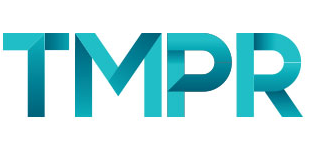How Do You Draft Award-winning Copy?
As we approach award season – across various sectors – we are beginning to prepare entries for our clients, but just how do you draft award-winning copy?
- Stick to the word count
This might seem obvious, but it’s very important. I have lost count of the number of times I have drafted an award entry and sifted through trying to remove every irrelevant ‘that’, ‘the’ and adjective, it is tedious. But the word count is there for a reason. Sadly while you may think your latest campaign deserves 1,000 words instead of 500, nobody else does. Challenge yourself to be eloquent enough in the limit you have been given. Judges have many entries to read through, if it says 500 words is the limit, stick to it. - Keep it to the point
This ties in with sticking to the word count that has been set, but while you are drafting the entry keep refreshing yourself with the question, are you really answering it? Or have you gone off on a tangent? - If allowed, use supporting evidence and/or references
Alongside writing an award entry it can sometimes be a challenge to obtain supporting evidence, such as case studies or references from customers. However if the opportunity allows you to provide this detail then it really is a must, it will strengthen your case and set you apart from the competition. - Avoid industry jargon
While you may be proud of being fluent in a sector not known to most, now is not the time to show off! Industry jargon can be off-putting, hard to decipher and frankly it’s just not necessary! Don’t hinder your chances just tell it how it is in plain English. - Proof read!
This really can be as simple as hitting ‘spell check’ on your keyboard, just make sure your language settings are sent to English UK! Another function I like to use is the dictation setting, it’s really helpful to listen to your copy being read back to you. It’s perfectly understandable that after reading through your entry what feels like a million times, it can be hard to see the wood from the tress with accuracy. Using the dictation setting is really useful for flagging any grammatical mistakes or missing/additional words. - Ask someone else to sense-check
As I’ve said, you’ve read your entry what feels like a million times, you’ve removed as many words as possible without it sounding like bad English but ask someone else to have a read through as well. Give them the entry criteria to make a call as to whether they think you’ve answered the question, and ask them to pick up on any spelling and grammar mistakes. - Check it again – have you kept to the brief?
Are you happy with what you have written? Remind yourself of the category, the brief, look through your draft and check your words against the criteria to make sure you’ve met it correctly. Ask yourself if you think this is the best it can be possibly be. - Keep to the deadline
Now we all know that award entries are renowned for being extended, we also know that despite this we are always undoubtedly drafting copy right up to the eleventh hour! So, first of all don’t assume the deadline will be extended – they might call your bluff. Secondly, draft a timeline with actions, responsibilities and deadlines. This will help you to manage the process through far more efficiently. It’s also handy to have all the actions that need to be completed in front of you as a good starting point. - Show some enthusiasm!
You’d like to win right? Of course of you would! So make it sound like it. Be proud of your work, this is your chance to tell someone who knows absolutely nothing about your project and all that you have done to make it a success. I like to think of it as if I’m explaining to my parents what I do for a living…! Write with enthusiasm, this is your chance to shine. - Be realistic
You may have followed all the guidelines, and written the most compelling entry that you possibly can, but remember it’s a competition. The judges will receive many entries, and it’s difficult to make an impact when you’re up against 10, 20 or even 30 decent entries for your category. Don’t feel disheartened if you don’t make the shortlist and you’ve done your best, there will always be other opportunities
